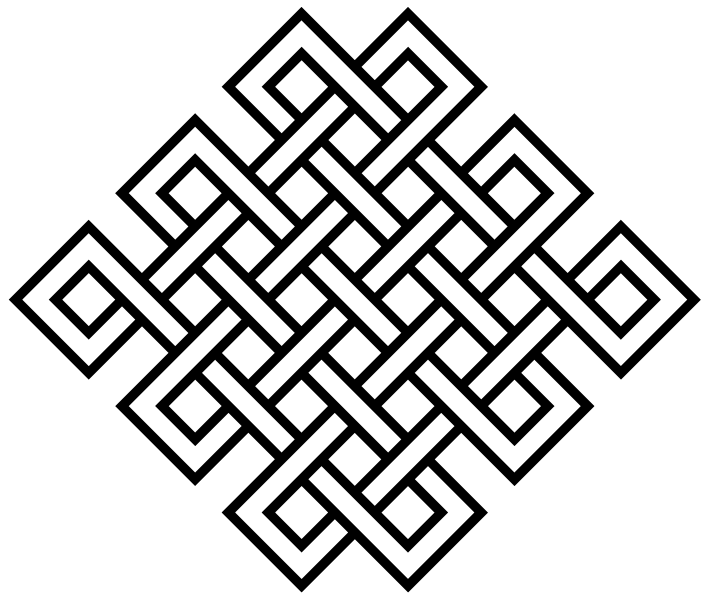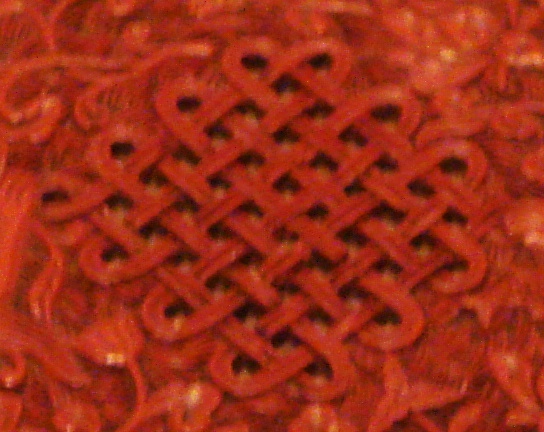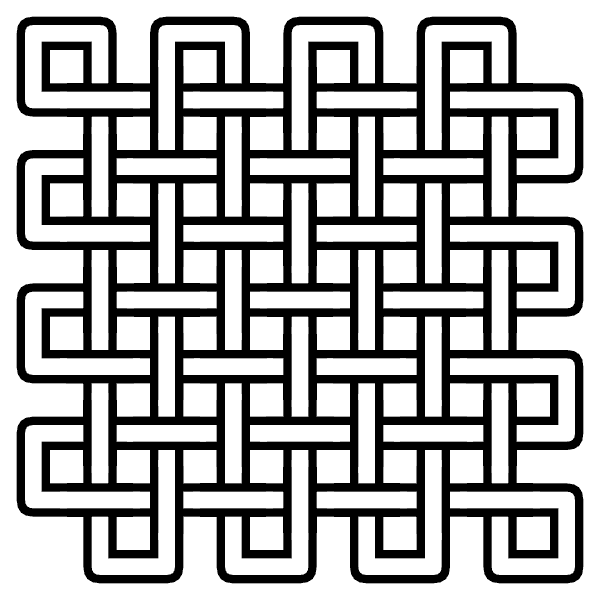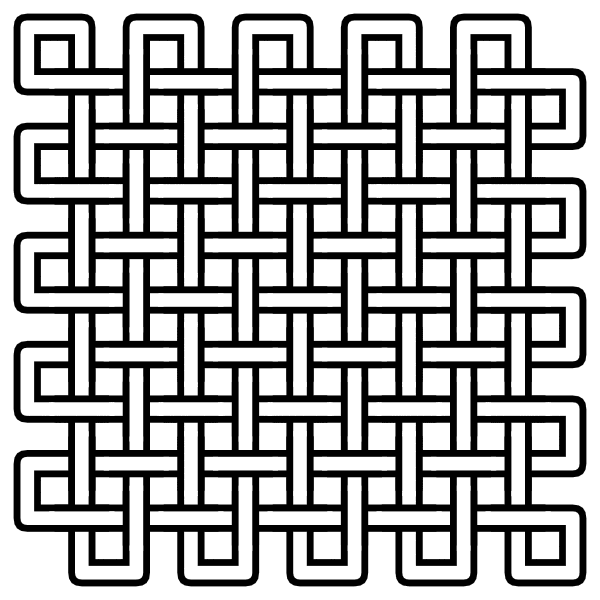Endless knot symbol: Difference between revisions
From Knot Atlas
Jump to navigationJump to search
No edit summary |
No edit summary |
||
| Line 3: | Line 3: | ||
<gallery> |
<gallery> |
||
Image:SusanWilliamsMedallion_160.jpg|Simplest form with 9 crossings, 7 of which are structurally significant (i.e. a [[7_4]] knot). Photograph of Susan Williams' medallion [http://www.math.toronto.edu/~drorbn/Gallery/KnottedObjects/SusanWilliamsMedallion.html]. |
Image:SusanWilliamsMedallion_160.jpg|Simplest form with 9 crossings, 7 of which are structurally significant (i.e. a [[7_4]] knot). Photograph of Susan Williams' medallion [http://www.math.toronto.edu/~drorbn/Gallery/KnottedObjects/SusanWilliamsMedallion.html]. |
||
Image:Endless knot outlined.png|Abstract geometric version of preceding. |
|||
Image:Endless_knot_23_crossings_25.png|Form with 25 crossings, 23 of which are structurally significant. |
Image:Endless_knot_23_crossings_25.png|Form with 25 crossings, 23 of which are structurally significant. |
||
Image:Endless knot Red lacquerware dish Ming Dynasty.jpg|Form with 49 crossings, 47 of which are structurally significant. Photograph of ca. 400 year old Chinese lacquerware dish. |
Image:Endless knot Red lacquerware dish Ming Dynasty.jpg|Form with 49 crossings, 47 of which are structurally significant. Photograph of ca. 400 year old Chinese lacquerware dish. |
||
Revision as of 10:04, 28 December 2011
Depictions of the "Endless Knot" symbol of Asian cultures (in some versions this is a symbol of Buddhism). In the series below, the knots have a number of crossings which is always the square of an odd number (but two of these crossings are not structurally significant).
![Simplest form with 9 crossings, 7 of which are structurally significant (i.e. a 7_4 knot). Photograph of Susan Williams' medallion [1].](/images/c/c5/SusanWilliamsMedallion_160.jpg)




